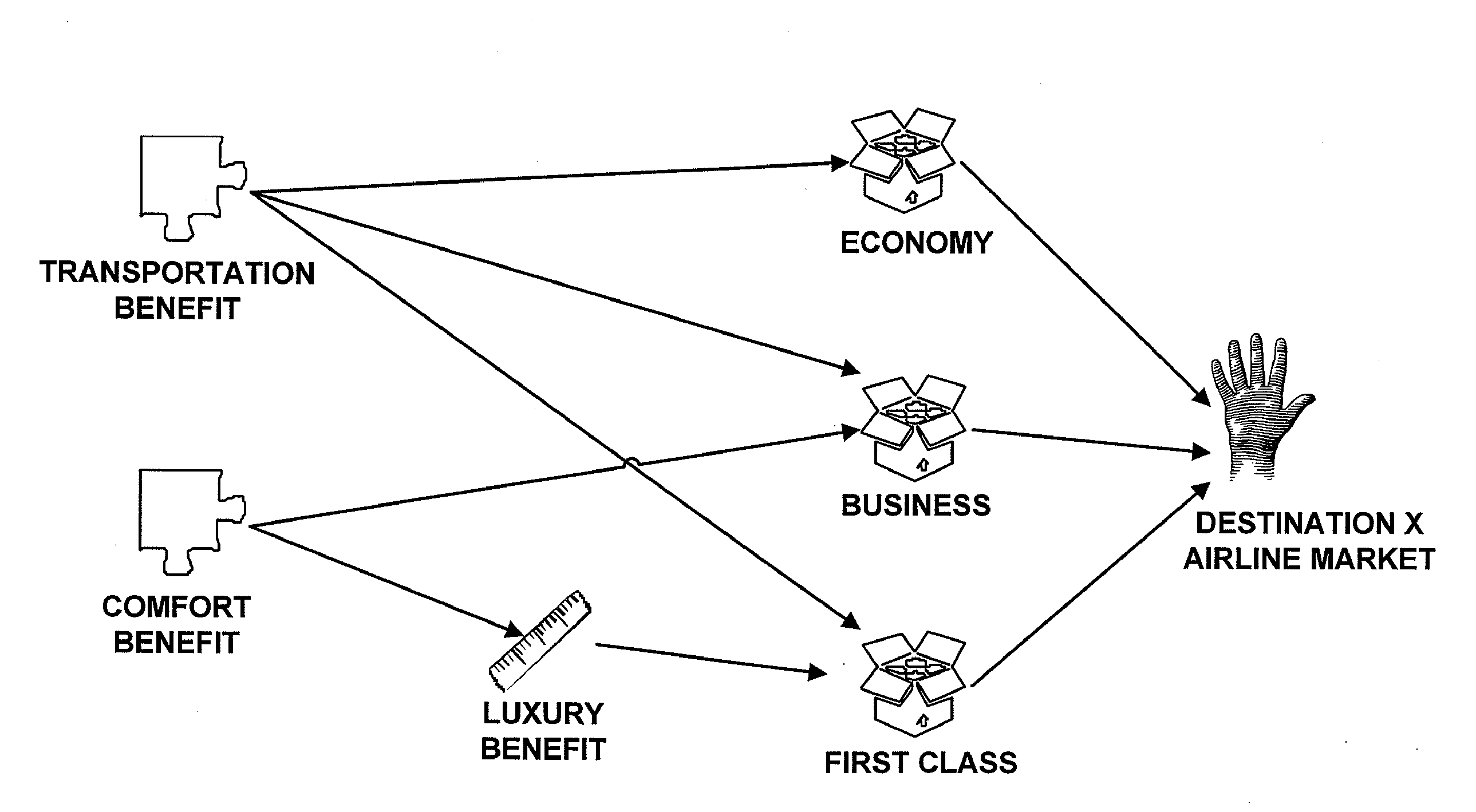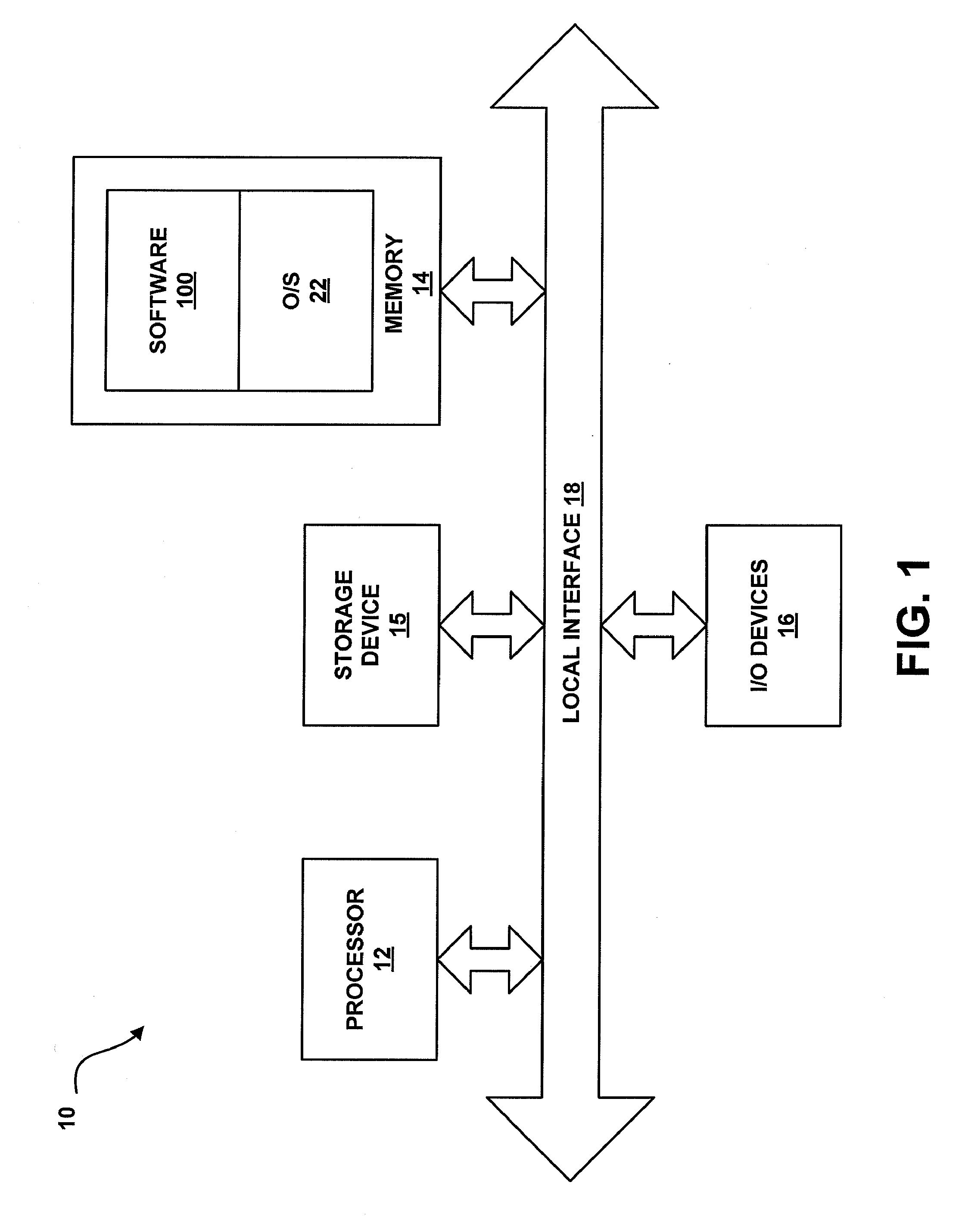System and method for visually building a market simulation
a market simulation and visual building technology, applied in the field of market simulators or optimizers, can solve the problems of cumbersome entry and manipulation of such data, inability to aggregate multiple survey results together, and high cost and time consumption
- Summary
- Abstract
- Description
- Claims
- Application Information
AI Technical Summary
Benefits of technology
Problems solved by technology
Method used
Image
Examples
Embodiment Construction
[0043]The market simulator / optimizer of the present invention combines partworth valuation techniques of Conjoint analysis with Nash equilibrium profit-maximization methodologies for sophisticated statistical treatment of a virtual available market comprising a multiplicity of virtual customers. An easy-to-use graphical user interface allows a user to arrange icons to model various market components.
[0044]The present system and method is a graphical tool used to create and run market model simulations. The present system and method may be provided by a Web-based application. The following description assumes that the present system and method is provided by a Web-based application. It should be noted that the system and method may also be provided in an environment that is not Web-based.
[0045]The market simulation / optimization system of the invention can be implemented in software (e.g., firmware), hardware, or a combination thereof. In the currently contemplated best mode, the mark...
PUM
 Login to View More
Login to View More Abstract
Description
Claims
Application Information
 Login to View More
Login to View More - R&D
- Intellectual Property
- Life Sciences
- Materials
- Tech Scout
- Unparalleled Data Quality
- Higher Quality Content
- 60% Fewer Hallucinations
Browse by: Latest US Patents, China's latest patents, Technical Efficacy Thesaurus, Application Domain, Technology Topic, Popular Technical Reports.
© 2025 PatSnap. All rights reserved.Legal|Privacy policy|Modern Slavery Act Transparency Statement|Sitemap|About US| Contact US: help@patsnap.com



